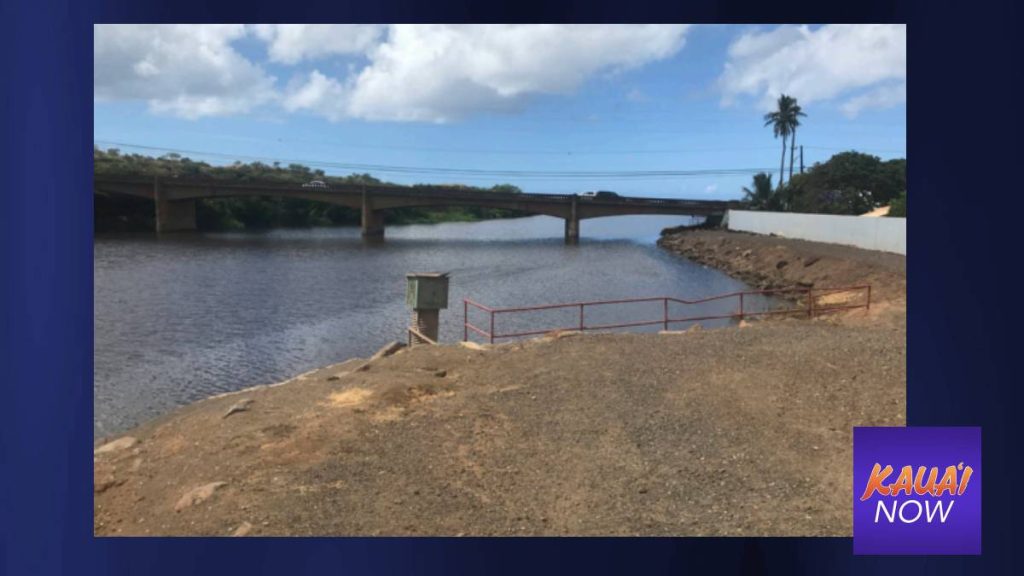U.S. Army Corps of Engineers to assess too-short levees on Kaua‘i, but timeframe unknown

Kaua‘i Mayor Derek Kawakami said he made headway with military brass last month – nearly one year after hundreds of West Side households were required to purchase flood insurance due to subpar levees constructed decades ago by the U.S. Army Corps of Engineers.
The problem is a longstanding one. In 2019, the Federal Emergency Management Agency announced it found the levees in the towns of Waimea and Hanapēpē to be four feet too short under current requirements.
But due to the agency’s updating of its flood insurance rate maps, which also changed rates in Moloa‘a on the North Shore of Kaua‘i, the new insurance requirement did not become effective until February 2021.
Kawakami said speaking with U.S. Army engineers was a priority during his January visit to Washington, D.C.
“Our levees on West Kaua‘i … are a major concern, considering what we’re seeing across the nation as far as rain and its impacts on our ability to protect our residents,” Kawakami said, referring to the global uptick in extreme weather events caused by climate change.
Army engineers in Washington, D.C. told Kawakami they want to conduct a risk assessment before proceeding with raising the levees.

“The levees need to be raised … for insurance purposes,” Kawakami explained. “The U.S. Army Corps of Engineers are saying, ‘We’re all about life safety, so in order for us to deem this as being the fix, we need to do a risk assessment.'”
In other words, homeowners will no longer have to pay national flood insurance when the levees are raised – but raised levees may not protect homeowners from flooding.
“There’s economic benefit versus the public health and safety benefit,” Kawakami said. “I am concerned about public health and safety. The economic side – getting these residents out of that flood zone – is one thing. But we want to make sure that when we do the improvements, they’ll hold up to what they’re forecasting as a worst-case scenario in that area.”
Despite the U.S. Army Corps of Engineers’ commitment to performing a risk assessment of Kaua‘i’s West Side levees, Army officials could not provide Kawakami with an estimated start date in January. The corps has a long list of projects across the country.
“The [environmental] disasters that have rippled across this entire nation have kept the U.S. Army Corps of Engineers in a steady state of operating in Code Red,” Kawakami said, pointing to recent historic flooding in California as an example. “I think as much as they would like to be able to say, ‘Hey, we’ll jump drop what we’re doing to address it,’ I just don’t think they have the capacity to do that. So I don’t think it’s a criticism of them not having a timeline – I think they take every single project with a sense of urgency.”
The County of Kaua‘i’s Climate Adaptation Plan – which is scheduled for completion sometime later this year – projects annual rainfall will continue declining in the future, but the frequency of heavy rainfall events, tidal flooding and tropical cyclones will increase.
In January 2022, Kaua‘i allocated $18 million in state funding to Waimea levee and floodgate repairs.

“We have funding to address our levee issues,” Kawakami said. “We just need the assistance of the U.S. Army Corps of Engineers to be able to move that project along, because we don’t have the capacity to build it up as is suggested to be able to be in compliance [with FEMA regulations].”
Kawakami “learned a lot” from his meeting with the army engineers, noting that while his administration has “a great relationship” with the corps’ Hawai‘i branch, its actions are often dictated from the corps’ headquarters in Washington, D.C.
The Kaua‘i Department of Public Works Engineering Division estimates approximately 221 addresses are affected in Waimea, as a result of the updated flood insurance rate maps. Approximately 144 addresses are affected in Hanapēpē.
The average annual National Flood Insurance Program premium for affected residences in Waimea and Hanapēpē is about $1,000, according to the Federal Emergency Management Agency.
But homeowners can expect to save some money on their flood insurance plans going forward. Last month – days before Kawakami’s trip to Washington, D.C. – the county was accepted into the National Flood Insurance Program’s Community Rating System with a Class 8 rating. It means most local buyers will receive a 10 percent discount on the cost of national flood insurance premiums issued or renewed on or after April 1, 2023.
The county also can take steps to increase the amount of the discount in the federal program in future years.
Editor’s note: this story has been updated to include additional information.



